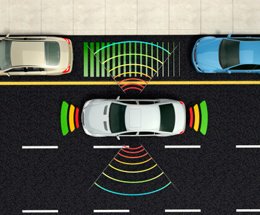
by Flagship Staff | Mar 20, 2018 | Blog
Owning a home is a dream shared by many. Home ownership provides many benefits, such as financial security and stability, the pride of ownership, and a special place to raise a family.
Homeownership also comes with a number of responsibilities, such as cutting the grass, shoveling snow, and completing minor repairs.
While many insurance companies were started because of devastating fires destroying their communities, today a common cause of property damage is water. A burst pipe, clogged toilet, or a failing water heater can send thousands of gallons of water through your home.
Statistics have shown that your home is more likely to experience damage from water than from fire or burglary.
Below is information on:
Home monitoring/detection systems;
Signs you have a leak;
Buying guides/reviews;
Insurance coverage; and
Links to systems.
Home monitoring/detection systems
1. Home water flow monitoring system. A water flow monitoring system is attached to your water main and protects your entire house. The system works by measuring water flow into your house. If it detects continuous water flow beyond the normal stopping and starting of your everyday appliances, it stops the flow of water into your house automatically.
2. Home water flow monitoring system with sensors. This type of water flow monitoring system includes sensors that are strategically placed around your house. Depending on the sensor, it can measure water leaks, as well as temperature and humidity changes. When connected to a hub or your home Wi-Fi, alerts can be sent to your smartphone. The shutoff valve will automatically stop the flow of water into your house, with this system as well.
3. Water leak sensors. These sensors are strategically placed around your house. Locations include:
Dishwashers;
Ice makers;
Water heaters;
Toilets;
Sinks;
Wash machines; and
Showers and tubs.
The difference between this system and the others is that it sounds an alarm and may send a text message to your phone. However, it doesn’t shut off the flow of water to your house. If you’re home, this system will alert you with plenty of time to turn the water off yourself. If you’re away from home, have a back-up plan set up with your kids or neighbors.
If you’re leaving your home for an extended period, it’s best to shut off your water at your water main. Even though a leak will still cause damage, the water flow won’t be continuous.
Signs you have a leak
Sometimes plumbing problems aren’t obvious and the damage occurs slowly over time. Here are few things you can watch for in case you have a leaky pipe in your home.
1. Check your water bill. If you notice a significant increase in your bill, this may be a sign of a leak.
2. Listen for the ticking of your water meter. If your water meter is constantly ticking, this may be a good indicator that you have a leak.
3. Check for wet spots/water marks. On a regular basis, inspect areas near your sinks, tubs, and toilets. If you see discoloring or wet spots, you may have a leak. Consider placing a small towel in your cabinets near the drainpipes. If you have a small leak, the towel will prevent it from soaking through and it may be easier to notice.
Buying guides/reviews
If you’re interested in learning more about different products available, please check out the links below.
“Best Water Leak Detectors: Protect Your Home from Damage”
“Afraid that your pipes will burst? Here are the best water leak detectors”
“Best water leaks detectors for smart homes”
Insurance coverage
Depending on your insurance policy and the coverage provided, water damage may or may not be covered. Water damage to your home caused by a burst pipe or water heater is covered under a West Bend policy. However, damage to your home caused by a flood would not be covered unless you have a policy through the National Flood Insurance Program.
In addition, if your basement is flooded due sump pump overflow/sewer backup a West Bend policy would provide coverage if you purchased it. Four coverage limits give you the flexibility to carry just the right amount of coverage for your finished or unfinished basement.
If you have a home monitoring/detection system that sends you an alert when it detects water, you may be eligible for a discount on a West Bend Home and Highway insurance policy. To learn more, contact your independent West Bend agent or find an agent near you by visiting www.thesilverlining.com.

by Flagship Staff | Mar 13, 2018 | Blog
According to Tom, West Bend claims manager, March, April, and May are typically heavy volume months for sump pump claims. Significant temperature fluctuations in the late winter and early spring months can result in a lot of pooling water and saturated soil. As a result, sump pump claims often come in fast and furiously. In a given day our inside property team could easily receive 40-50 sump pump related claims. This claim volume can last a full week or two. Typically, the losses are reported quickly. An insured stepping off the last stair of their basement staircase into a foot of water usually leads to a very quick call to the insurance company. As mentioned, the spring months are “sump season”; claims during the summer months are usually more sporadic. A quick downpour of an inch or two of heavy rain during the summer months can easily overwhelm drain tiles and sump pump crocks.
Here are some facts regarding water damage.
Estimates indicate that 98% of basements in the U.S. will eventually experience water damage.
Water damage claims cost insurance companies approximately $2.5 billion annually.
The average insurance claim for water damage is $6,965.
I’ve personally experienced several inches of clean water in my basement and it’s overwhelming. Thankfully, my local restoration company responded quickly. They saved my finished basement from major damage!
Unlike other appliances, a sump pump quietly does its job and you probably don’t pay attention to it. It’s usually found in your basement and its primary function is to keep your basement dry. Below is information on:
How a sump pump works;
Types of sump pumps;
Benefits of a sump pump;
Maintenance tips;
Claim scenario; and
Insurance policy coverage.
How a sump pump works?
A sump pump collects ground water in a sump tank, also known as a basin, crock, or pit. When the ground water fills the tank to a certain level, the float travels up a float rod and activates a switch causing the pump motor to turn on. The motor then removes the water from the tank and discharges it away from your house.
Types of sump pumps
1. Submersible. This type of sump pump is the most common and it’s installed during home construction. The pump is covered inside the tank.
2. Non-submersible (Pedestal). This type of pump consists of a motor and a hose. The motor is installed above the basement floor. The hose is connected to the motor and then routed into the sump tank. This pump is less expensive and can be installed in any home at any time.
Benefits of a sump pump
1. Prevents flooding. Heavy periods of rain can cause water to accumulate around the base of your foundation. A sump pump will prevent the water from entering and flooding your basement. In addition, if you experience a burst pipe in your basement, a floor drain may not be enough to eradicate the water. A sump pump may help push this water out, minimizing the amount of standing water.
2. Reduces mold growth. Standing water can lead to mold growth. Mold can be harmful to your health and your house. Keeping your basement dry can prevent growth.
3. Prevents dampness.
4. Prevents fires. Water entering your basement can cause appliances to short-circuit which could lead to an electrical fire.
5. Relatively inexpensive. Depending on where you live, Mother Nature can keep your pump running on a regular basis. For the protection that a sump pump provides your home, they are relatively inexpensive. Keep in mind that they may last 15-30 years, so replacement does not occur regularly.
If you decide to “do it yourself”, it’s estimated that a standard 1/3 hp sump pump can cost between $100 and $200. If you have one professionally installed by a plumber it could cost on average around $1,100.
The actual cost will depend on your location, the plumber you choose, and the pump options.
Maintenance tips
Each spring, follow these sump pump maintenance tips to ensure yours works properly.
1. Remove the cover. Check the tank for debris, such as mud, rocks, or gravel.
2. Flush the system. Ensure proper pump operation by flushing out the system with water from a hose or bucket of water. When the pump turns on, listen for strange sounds. The pump should run smooth. If it doesn’t that could signal worn or damaged parts. Contact a local plumber immediately for service.
3. Inspect the float. As water fills the tank, make sure the float travels freely on the float rod.
4. Inspect the discharge pipe. Before major rain, make sure the discharge hose is free from debris, such as mulch, mud, stones, or rodent nests. Ensure that the discharged water runs away from your foundation.
5. Inspect the check valve. Make sure your sump pump has a 3/16 relief hole in the pipe between the pump and the check valve. This prevents check valve vapor locks and greatly extends the life of your pump.
Claim Scenario
Several years ago, West Bend insureds moved into their newly constructed home. As a rainstorm passed through, they did not pay too much attention. Later in the day, they went down to their basement and stepped off the last stair into water. Pea gravel from the construction process was found in the sump pit. Unfortunately, the sump pump sucked in the pea gravel causing it to be destroyed. Luckily, their basement was unfinished and most of their personal belongings were stored in totes resulting in minimal damage. Remember, it is important to inspect your system on regular basis.
Insurance policy coverage
An insurance policy may not provide coverage for sump pump overflow/sewer backup. A West Bend policy, provides coverage if you choose. Sump pump overflow/sewer backup provides coverage if your sump pump overflows or your sewer backs up, causing water damage to possessions in your basement. Four coverage limits give you the flexibility to carry just the right amount of coverage for your finished or unfinished basement.
Ask your insurance agent if you’re adequately covered.

by Flagship Staff | Mar 7, 2018 | Blog
Having worked in the insurance industry for most of my career, I’ve talked to many people about the benefits of a West Bend insurance policy. While many people were interested in learning more, I often heard that getting a quote is confusing and time consuming.
Buying a different insurance policy isn’t exciting or fun and it can be overwhelming. However, you owe it to yourself to make sure you have the best coverage available for you and your family.
The next time you consider getting an insurance quote, here’s some of the information you’ll need to provide to your independent insurance agent.
Homeowners Insurance
Owning a home is probably the biggest financial investment you’ll make. It’s important to make sure it’s adequately protected. Here’s some information you’ll have to provide regarding your home.
1. Residency.
Who lives with you;
Home address;
How long you’ve lived there;
Marital status;
If business operations are conducted from your home; and
If you have any pets.
2. Home characteristics.
Year built;
Total finished square footage;
Number of stories;
Number of bedrooms;
Number of bathrooms;
Safety features (i.e. home security system, fire sprinklers etc.);
Roof type and age;
Exterior construction; and
Home improvements (i.e. finished basement or remodeled kitchen.)
3. History.
Who’s your current insurance company?
How much is your current coverage on your home and personal property?
Do you have a mortgage and if so, name of your mortgage company?
Have you had past insurance claims?
Renters Insurance
Renters insurance is more straightforward. Its purpose is to cover your personal belongings, as well as provide some liability coverage.
It’s important to understand, that there are a couple of misconceptions about renters insurance. People often tell me their property owner has insurance or they don’t own anything expensive so they don’t need it. Most often, the property owner’s insurance policy only covers the building. In addition, if you add up your personal belongings, you’ll probably be surprised about their value. What would you do if you lost everything in a fire?
Auto Insurance
While not all states require auto insurance, they do require financial responsibility. Financial responsibility means that if you cause damage or injury to another person or their property, you have the financial means to pay for the damage.
Here’s some information you’ll have to provide for an auto quote.
1. Vehicle information.
Purchase date;
Mileage;
Vehicle type i.e. year, make, model;
Vehicle Identification Number (VIN);
Current insurance company;
Garaging location;
Loan information;
Safety devices; and
Business or personal.
2. Diver information.
Full name;
Date of birth;
Marital status; and
Profession.
3. Driving history.
Tickets and accidents; and
Mileage driven each day.

by Flagship Staff | Feb 27, 2018 | Blog
This year’s flu season has grabbed our attention. Hospitalization for people infected with the flu has increased for the first time since 2013. In addition, there have been numerous reports of healthy people dying from complications with the flu.
There are a number of reasons the flu is worse than normal this year.
1. The flu vaccine is only 25% effective.
2. Multiple strains of the flu are circulating at the same time.
3. H3N2, a prevalent strain of Influenza A, can cause some peoples’ immune systems to go into overdrive causing more inflammation, which makes them sicker.
If your family has experienced the flu this season, it’s important to clean your home to prevent the spread of the virus. While disinfecting your entire house can be overwhelming, experts recommend focusing on frequently touched items or surfaces.
When it comes to disinfectants, there are many options. You can buy products such as Lysol spray or Clorox disinfectant wipes. Make sure to read the product’s label before buying. Other home remedy cleaning solutions may work just as well.
Here’s a list of common household items you should disinfect in your home.
1. Mobile device(s). Whether we admit it or not, we spend countless hours on our mobile devices. It’s estimated that in the U.S., people spend up to five hours per day on their mobile devices. Since cold and flu viruses can live on them for a few days, it’s important to clean them regularly.
2. Computer keyboards. If your child is home from school sick, but is doing schoolwork on your family computer, it’s a good idea to clean it after each use.
3. TV remotes/video game controllers. TV remotes and video game controllers are used quite frequently, but are probably never cleaned. An ill family member may use them to pass time.
4. Doorknobs, handrails, and faucets. These items are common touch points in our homes. Germs live the longest on hard surfaces.
5. Kitchen and bathroom countertops. These countertops are used frequently and may contain the most germs in your home. Use disinfectant wipes or paper towel in combination with a spray. Don’t use a sponge because germs can live inside it.
6. Children’s toys. If you have small children, everything tends to go in their mouths. Clean their toys daily with warm soapy water and dry them using paper towel.
Here’s a list of additional precautions you can take to prevent the spread of the flu virus.
1. Toss the toothbrush. If you have a cheap toothbrush, throw it away. If it’s your favorite toothbrush and you don’t want to part with it, look online for ways to disinfect it.
2. Use disposable towels. Hectic schedules during the week can make it difficult to keep up with laundry. Using disposable towels cuts down on laundry and prevents the spread of germs from sharing towels.
3. Avoid touching your eyes, nose, and mouth.
4. Wash your hands frequently. Wash your hands frequently with soap and water for at least 20 seconds. Alternatively, use an alcohol based hand sanitizer that contains at least 60% alcohol.

by Flagship Staff | Feb 20, 2018 | Blog
A few months ago, I purchased a new car. Because my previous car was 10 years old, it didn’t have all the safety technology that’s installed on new cars.
While this new technology is nice and helps you with your driving, keeping the sensors clean during the winter months is important.
Here are some of the safety sensors that may be on your car.
1. Forward Collision Warning System (FCW). Car manufacturers have done a nice job installing the sensors, so it may take you a couple of strolls around your car to find them. FCW checks the road in front of you and is designed to warn you if a car in front of you is traveling at a slower speed or has stopped. If this is the case, the system may send you a variety of warnings, such as sounds, visuals, vibrations, or a brake pulse.
Because these sensors may be located in the grille or front bumper, they can become blocked by snow, ice, or dirt quickly and easily. When removing snow from your car, don’t forget about these sensors.
2. Adaptive Cruise Control. This system automatically adjusts your speed if you approach a car that is traveling slower than you are. This system may use radars that are mounted in your grille and an in-vehicle camera.
3. Blind-Spot Monitoring System. This system warns you of cars or motorcycles that are hidden from you i.e. in your blind spot. In the good ole days, blind spot mirrors where used to help with this. Today, this system alerts you by sound, visualization, or vibration. In my car, the outside mirrors light up with an orange color. The radars for this system are usually found in your car’s rear quarter panels. While this part of the car doesn’t get as dirty as the front and rear, it is important to be mindful of where they’re located.
Blind-spot monitoring systems work best at highway speeds and should not be relied on 100% of the time. Before making a lane change, it’s still important to look over your shoulder.
4. Rear Camera. The rear camera is a wonderful set of extra eyes. This safety device helps you see directly behind your car. It doesn’t allow you to see pedestrians or traffic moving from side to side. This winter, I’m constantly cleaning the camera because of road spray. On my car, the camera is slightly above the license plate on my tailgate.
5. Back-up Warning/Rear Cross Traffic Alert. These sensors provide an audible alert as you get close to things or as rear cross traffic approaches your car. The closer an object, the faster the alert sounds. These sensors are in usually in your car’s rear bumper.
6. The Windshield. Cameras and other technology such as automatic windshield wiper sensors may be built into the glass. Make sure your entire windshield is clear of snow and ice. The little peep hole that some motorists use is not sufficient for safe driving.
If your car has this technology, a regular car wash can help keep it free and clear of snow, ice, and road spray. If the temperature is too cold, a small damp cloth may do the trick.
Please be mindful that road spray may contain salt and sand, which can scratch your paint.
If you have difficulty finding the sensors on your car, please refer to your owner’s manual or give your local car dealership a call.
Finally, never rely fully on your safety sensors. Always use your eyes to keep track of what’s happening around your vehicle.





